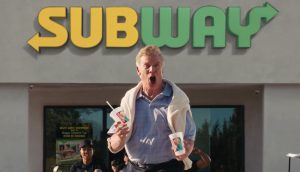Index Exchange saw an increase in programmatic advertising action in the last half of April over the first half in some categories.
Retail, business and entertainment have all increased in the latter half of the month, and even auto and travel had stronger finishes than at the beginning of the month. In the most recent Marketplace Plus newsletter put out by the global programmatic marketplace, it also suggests there have been changes in consumer behaviour, and that consumers officially reached the “vice” stage of the pandemic.
Will Doherty, EVP of global marketplace development for Index Exchange, tells MiC, “We’ve seen CPG as a category start to pick back up, not quite at pre-COVID levels but better than the low point. When I went deeper into what categories within CPG were responsible for increases, obviously there were cleaning supplies, and we also saw diet and health pick up. Along with that, alcohol as an advertising category spiked and then tobacco and cannabis right along side of it.”
Sarah Thompson, CSO Mindshare Canada, says the most recent Mindshare Canada “The New Normal” bi-weekly study reinforces the determination of Canadians to stay healthy. “In fact, 64% of our most recent survey respondents said they are trying to stay healthy at home but we are also trending higher for purchasing alcohol and snacks than the global average. We buy more pet food, beauty products and OTC medication than global. When you consider all these trends, we are really trying to take care of ourselves, and pets, but the stress and worry gets the better of us. And we are all worried, and that worry is focused on the economy. This isn’t about a new vice, this is about managing the stress in our own way.”
Fil Lourenco, VP digital media, Havas Media Canada, says a majority of the agency’s clients increased spending in April. He agrees with Doherty’s assessment and that when it comes to delivery-based shopping, it will probably be the most long-lasting habit created from the crisis. “A similar effect was seen after the SARS outbreak in the early 2000s. This crisis has gotten consumers to try more delivery options than they typically would have. Grocery delivery is an area Canadians have lagged behind others markets in adopting. Now more than ever, retailers are having a tough time keeping up with demand. This will be a lasting effect and require retailers to change their strategies when things return to a more normal state.”
A new category that Index Exchange is seeing emerge is car rental as an advertising group. As cabin fever sets in, Doherty says, “People are like, ‘Yes, we might rent a car and try to get out to the country for a week where it’s a little more rural and we can be outside.’ No one can make normal travel or vacation-getaway plans, so I think you’re going o see a lot more local travel and car rentals are a great way to facilitate that. If it sticks through the summer, it will be an interesting trend to keep watching.”
Doherty says that on the whole everything has been pretty stable month over month and expects that to be the reality at least for Q2 and potentially into Q3 until markets and communities start opening back up even in limited fashion. “Marketers are only thinking in two to four week increments. They’re not making long-term plans. No one knows what June will look like relative to May so they’ll get a plan in place for May and re-evaluate in June.”























